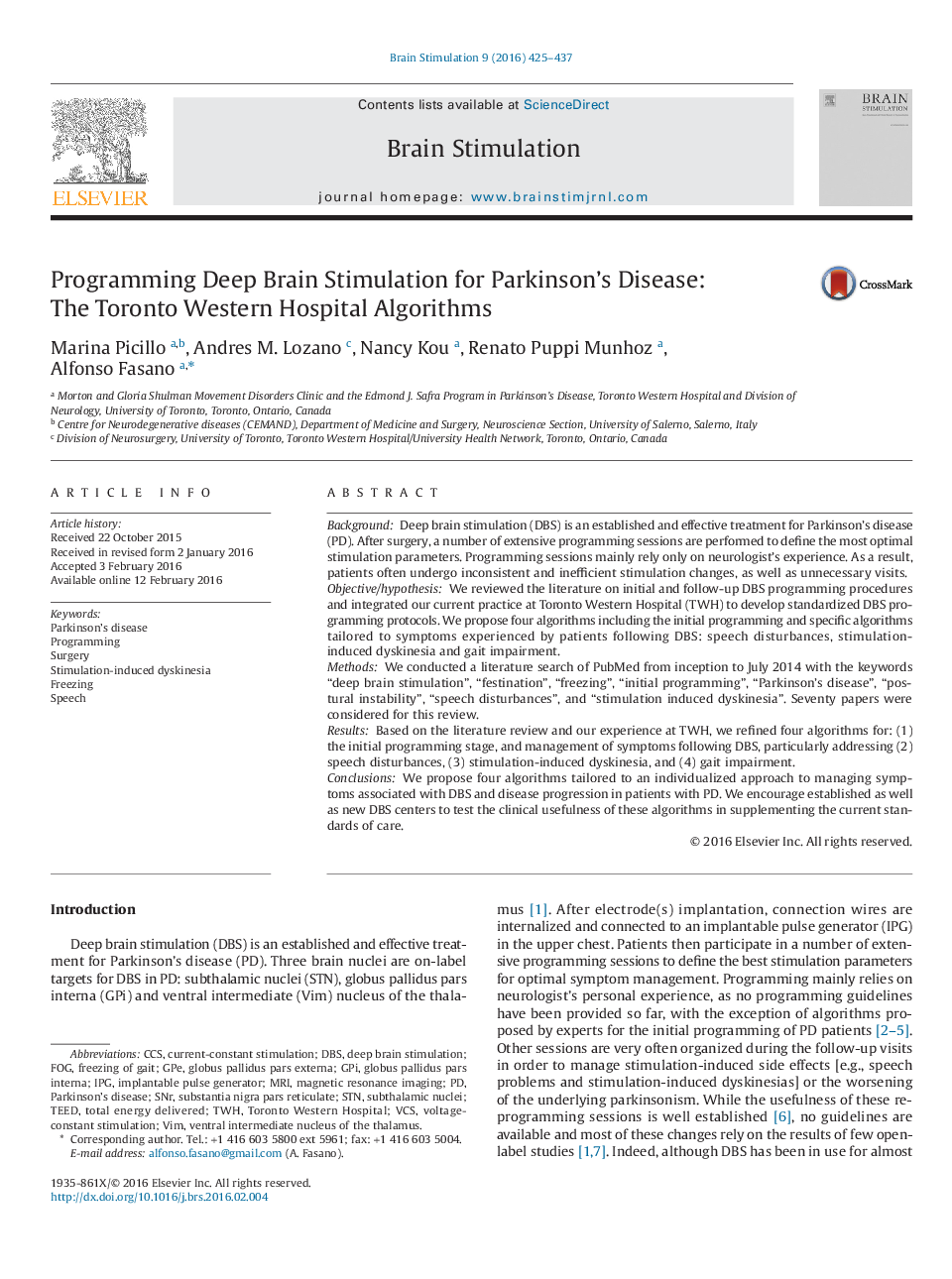| کد مقاله | کد نشریه | سال انتشار | مقاله انگلیسی | نسخه تمام متن |
|---|---|---|---|---|
| 6005443 | 1184664 | 2016 | 13 صفحه PDF | دانلود رایگان |
- Deep brain stimulation is an established and effective treatment for Parkinson's disease.
- Post-operative programming mainly relies on clinician's personal experience as no evidence-based guidelines available.
- We reviewed the literature on initial and follow-up programming procedures.
- We developed standardized programming protocols to manage symptoms associated with deep brain stimulation and disease progression in patients with Parkinson's disease.
BackgroundDeep brain stimulation (DBS) is an established and effective treatment for Parkinson's disease (PD). After surgery, a number of extensive programming sessions are performed to define the most optimal stimulation parameters. Programming sessions mainly rely only on neurologist's experience. As a result, patients often undergo inconsistent and inefficient stimulation changes, as well as unnecessary visits.Objective/hypothesisWe reviewed the literature on initial and follow-up DBS programming procedures and integrated our current practice at Toronto Western Hospital (TWH) to develop standardized DBS programming protocols. We propose four algorithms including the initial programming and specific algorithms tailored to symptoms experienced by patients following DBS: speech disturbances, stimulation-induced dyskinesia and gait impairment.MethodsWe conducted a literature search of PubMed from inception to July 2014 with the keywords “deep brain stimulation”, “festination”, “freezing”, “initial programming”, “Parkinson's disease”, “postural instability”, “speech disturbances”, and “stimulation induced dyskinesia”. Seventy papers were considered for this review.ResultsBased on the literature review and our experience at TWH, we refined four algorithms for: (1) the initial programming stage, and management of symptoms following DBS, particularly addressing (2) speech disturbances, (3) stimulation-induced dyskinesia, and (4) gait impairment.ConclusionsWe propose four algorithms tailored to an individualized approach to managing symptoms associated with DBS and disease progression in patients with PD. We encourage established as well as new DBS centers to test the clinical usefulness of these algorithms in supplementing the current standards of care.
Journal: Brain Stimulation - Volume 9, Issue 3, MayâJune 2016, Pages 425-437
